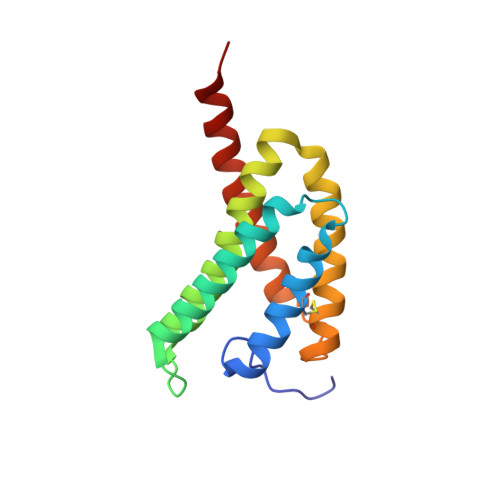Structural Basis of Oligomerization of N-Terminal Domain of Spider Aciniform Silk Protein.
Chakraborty, R., Fan, J.S., Lai, C.C., Raghuvamsi, P.V., Chee, P.X., Anand, G.S., Yang, D.(2020) Int J Mol Sci 21
- PubMed: 32586030
- DOI: https://doi.org/10.3390/ijms21124466
- Primary Citation of Related Structures:
7BUT - PubMed Abstract:
Spider silk is self-assembled from water-soluble silk proteins through changes in the environment, including pH, salt concentrations, and shear force. The N-terminal domains of major and minor ampullate silk proteins have been found to play an important role in the assembly process through salt- and pH-dependent dimerization. Here, we identified the sequences of the N-terminal domains of aciniform silk protein (AcSpN) and major ampullate silk protein (MaSpN) from Nephila antipodiana ( NA ). Different from MaSpN, our biophysical characterization indicated that AcSpN assembles to form large oligomers, instead of a dimer, upon condition changes from neutral to acidic pH and/or from a high to low salt concentration. Our structural studies, by nuclear magnetic resonance spectroscopy and homology modelling, revealed that AcSpN and MaSpN monomers adopt similar overall structures, but have very different charge distributions contributing to the differential self-association features. The intermolecular interaction interfaces for AcSp oligomers were identified using hydrogen-deuterium exchange mass spectrometry and mutagenesis. On the basis of the monomeric structure and identified interfaces, the oligomeric structures of AcSpN were modelled. The structural information obtained will facilitate an understanding of silk fiber formation mechanisms for aciniform silk protein.
Organizational Affiliation:
Department of Biological Sciences, National University of Singapore, 14 Science Drive 4, Singapore 117543, Singapore.














